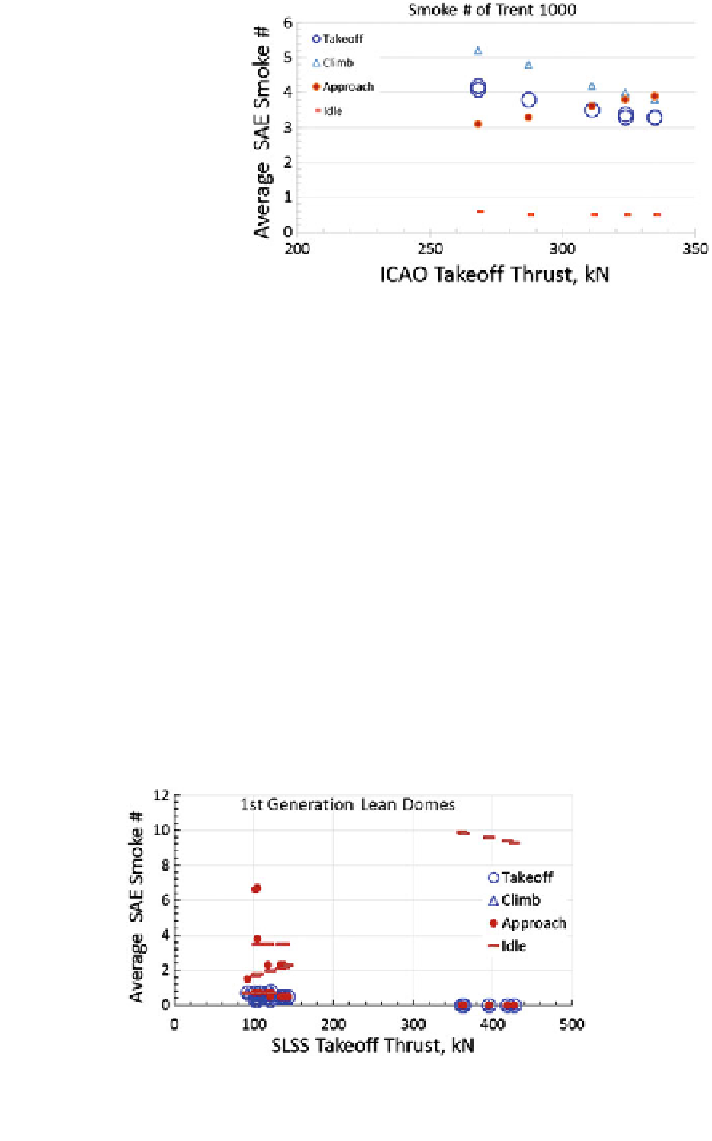Environmental Engineering Reference
In-Depth Information
Fig. 33 Average SAE smoke
numbers of the rich-dome
Trent1000 engine models for
each of the four modes of the
landing
-
takeoff cycle
The modern N and N + 1 generation Trent1000 rich domes have consistently
performed very well in regard to reducing NO
x
and simultaneously bringing
maximum smoke number in single digit as shown in Fig.
33
indicating very low
values at idle, increases by a factor of 5
-
10 during approach, climb, and takeoff
modes of the landing
takeoff cycle. It even retains the classical pattern of having
smoke number slightly higher during climb than takeoff; the difference reduces as
the engine runs closer to its highest rated level. The data presented for rich domes in
Figs.
31
,
32
, and
33
clearly show that all the three OEMs have the empirical know-
how for keeping smoke considerably lower than the
-
first generation aviation
engines in which the small engines could have smoke numbers approaching 50.
Similarly with more experience on lean domes, it would be equally easy to achieve
even lower smoke emission as illustrated in Figs.
34
and
35
, respectively, for the
first generation lean domes include 10
models of the CFM56-5B, 5 models of the CFM-7B, and 5 models of the GE90;
whereas the second generation lean domes include 15 and 11 models of the GEnx
tested, respectively, in 2009 and 2012. As shown in Fig.
34
, the maximum smoke
first and second generation lean domes. The
Fig. 34 Average SAE smoke numbers of the first generation lean domes (viz. CFM DAC and
GE90 DAC1) for each of the four modes of the landing
-
takeoff cycle, namely takeoff, climbout,
approach, and
fl
flight idle

Search WWH ::

Custom Search